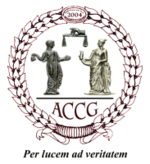There are 9082 coins on the website, 390 of which are sold
|
Attribution: SNG Kayhan 461; Klein 423
Date: 6th-5th Century BC
Obverse: Head of lion facing, seen from above in triangular border of dots
Reverse: Stellate or floral pattern in shallow incuse square
Size: 6.32mm
Weight: .27 grams
Rarity:  6 6
Description: VF
|
Attribution: RIC VI 103 Ticinum
Date: AD 308-310
Obverse: IMP MAXENTIVS PF AVG CONS, bust left wearing consular robe, holding eagle-tipped scepter
Reverse: CONSERV-VRB SVAE, Roma seated left in temple, PT in exergue
Size: 25.93mm
Weight: 6.35 grams
Rarity:  6 6
Description: VF
|
Attribution: RIC VII 88 Antioch
Date: AD 330-335
Obverse: FL IVL CONSTANTIVS NOB C, diademed and cuirassed bust right
Reverse: GLOR-IA EXERC-ITVS, two soldiers standing facing, two standard between them, SMANZ in exergue
Size: 17.48mm
Weight: 2.73 grams
Rarity:  5 5
Description: nearing VF. From the Jim Moenke Collection.
|
Attribution: MACW 5165-5172 types
Date: 4th-5th century AD
Obverse: Bust right
Reverse: Chaotic series of lines, perhaps representing two standing figures
Size: 12.15mm
Weight: .45 grams
Rarity:  6 6
Description: Flat striking. An interesting local imitative copied from the themes and types of the late Roman Empire.
|
Attribution: MNIS 61
Date: circa AD 780-980
Obverse: Bust of king right, wearing elaborate winged headdress
Reverse: Fire altar with two attendants
Size: 22.38mm
Weight: 3.97 grams
Rarity:  6 6
Description: good Fine+. From the Bill Spengler collection with his 2x2 holder.
William “Bill” F Spengler (1923-2005) served as a Foreign Service Officer in Thailand, Norway, Pakistan and Afghanistan. During WWII, he served as a code breaker in the U.S. Army, joined the Department of State in 1950 and retired as Consul General in Lahore, Pakistan in 1976. In Kabul in the 1960s, he found interest in the ancient coins from the region and became one of the foremost authorities on the peoples who had passed through the area through the centuries. This interest in numismatics and history influenced the rest of his life. He published numerous articles, contributed and edited catalogs on world coins and co-authored two books on the Turkomans, along with Wayne G Sayles.
|
|

























